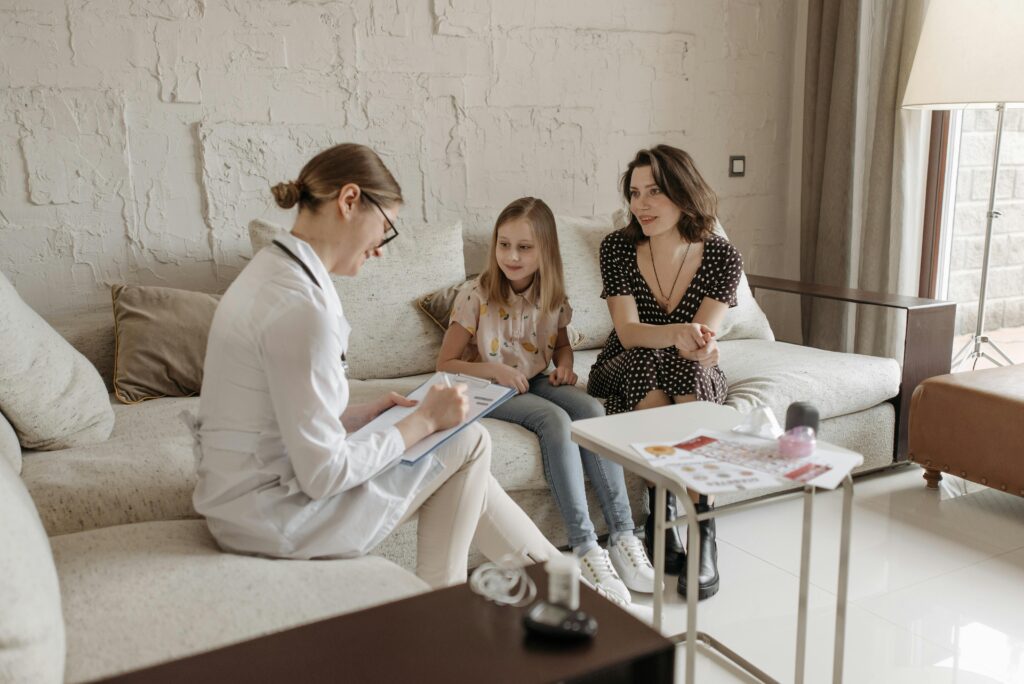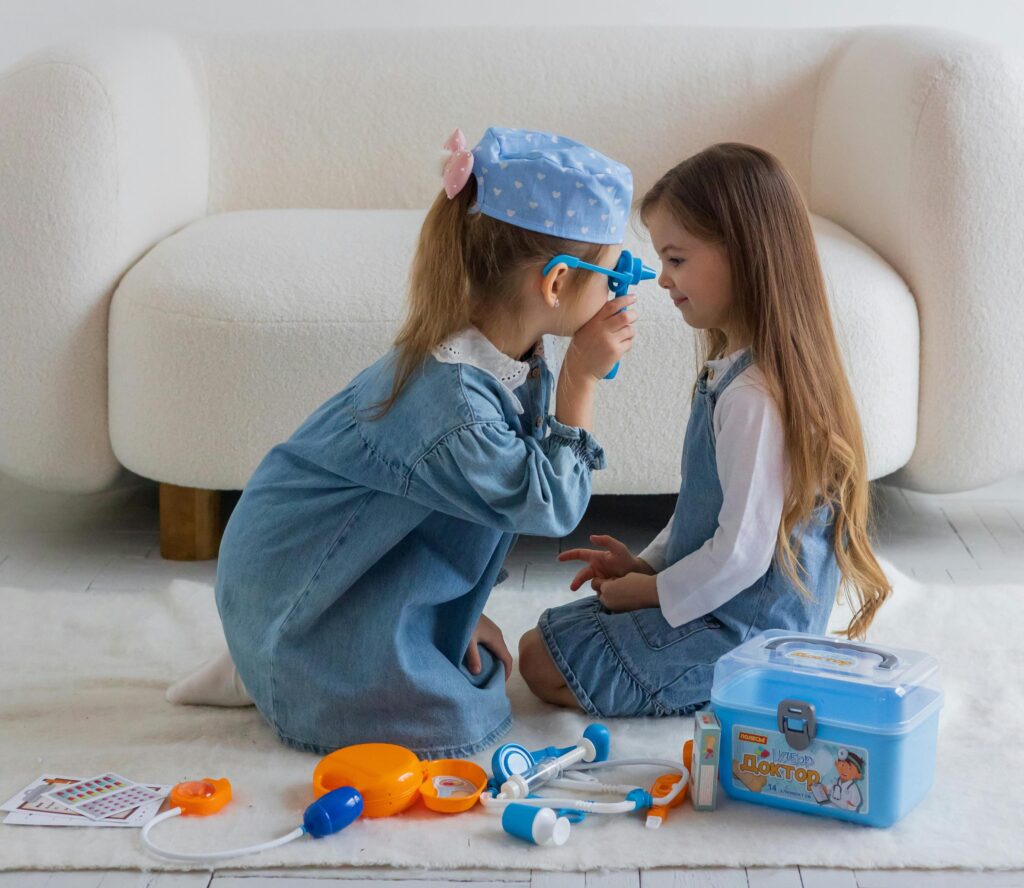Guest article provided by bowlingtherapy.com

Photo by Pexels As children grow and develop, they are more likely to come in contact with new medical professionals. Attending visits for siblings, themselves, parents, and often grandparents. With a curious mind and developmental changes in emotional regulation, children may have questions or concerns regarding these meetings. In this article we will discuss how to help your child feel comfortable when meeting new medical professionals. |
What To Expect
Just like adults, children often thrive with knowing details. When we know our role and what we can expect, we are more likely to feel comfortable and feel less anxious. How much we share before an appointment will differ for what we know as the adult and the age of the child. However, the best rule of thumb is to stick to absolute truths and focus on what is within our control. For example, highlighting if the child can eat before the appointment, that the doctor wants to help your child be healthy, and focusing on what they could take into the appointment with them.
Bringing Comfort Items
In a place of unfamiliarity, having a comfort item or two may help children feel more at ease. Whether it’s their favorite stuffy, a book,a blanket, or a small toy, their own item will help them feel more relaxed. For toddlers and younger children, keeping busy can also provide aid for busy bodies who feel the need to move around. For older kids, their ability to bring music, a book, or something to keep their hands busy may be tremendously helpful. Similarly, if your child can wear comfortable clothes or have a favorite clothing item on it may help them feel their best.
Find Comfort Within
I often hear from clients that the waiting room can be the hardest part. Using the comfort items above can be useful to pass the time away and ease our bigger feelings. When our hands are busy, we are less likely to be in our head thinking about how much time has passed, who we are going to meet, and all the many “what if’s” that can fill our minds. Taking deep breaths, using progressive muscle relaxation, and using grounding exercises are three quick mood regulators that can be utilized in any waiting room. It’s not about perfection but the art of practicing how to relax the body and mind. While your preteen or older teen may not ask you to join in, they may appreciate you utilizing this tool with them.
Daily exercise and movement can help children emotionally regulate their bodies. If your child is more likely to have big energy, try finding a park or local option to encourage movement before the doctor’s appointment. Exuding extra energy before the meeting can help ease children into better communication and mood during time with the doctor.

Photo by Pexels
Play It Out
Hands on learning and visual demonstrations are two of the best ways to teach youth. Similarly, children thrive when they can role play scenarios that they could be learning or practicing. We emphasize this tool when teaching kids how to act in social situations. School is full of opportunities to see something and have children practice it on repeat. When a new medical appointment is added to the family calendar, it can be helpful to practice the doctors office through use of play. Model some of the language and practices that may be used in the doctors office. If you have the real or toy version of medical devices in house it can be helpful to use them during play. When you can, allow time to let younger kids explore medical devices. Encourage them to play doctor and you could be the patient.
Adjacent to hands on play, there are many age appropriate video options available online to watch as a guide. With so many options available, there are choices to be more specific; whether it’s looking up a general first visit to the dentist or specifically what to expect during a deep cleaning. If we know what may be similar or different in the pending doctors appointment, we can have follow up conversations with our children that mimic what is viewed in the videos. Focus the attention on what we know will happen and focus on age appropriate information.
A positive relationship between patient and doctor can make a huge difference in health
Let The Office Be Your Guide
While this office could be a new place for your family, the professional(s) there are highly accustomed to their specialty. You are the keeper of your child’s needs and history so share with staff any concerns or questions that you or your child may have. If possible, you can ask about filling out office documentation before the first visit to focus on your child in the office. You can also notate on the office documents and to any office professional any concerns or anxieties that may be present.
Medical professionals are often more likely to have a mindful bedside manner with working with kids. Meaning that they are more likely to meet their adolescent patients at their level and try to help ease them into the office. Oftentimes, pediatric offices may have more kid friendly options in the waiting room, smaller pediatric medical devices, and access to tools such as stickers and small prizes to ease their smaller patients.
Meet Them Where They Are
Kids are steady observers and can mimic what they see. If they look at you in the waiting room and you’re biting your nails and sweating bullets they are more likely to join you. Similarly, if you look at them in the waiting room and you see they have relaxed shoulders and steady slow breaths then we can follow them. Depending on factors like history of anxiety, family medical concerns, etc. adults may actually be more nervous about doctors appointments than the child is. We can set them up for success and check in with them but their body language and needs for a day off will ultimately be the guide. Support them, encourage them, and help your child grow their confidence to lead the way as they get older.
Stay well,
AuthorMegan Bowling, M.A., LMFT is a Licensed Marriage and Family Therapist in Yorba Linda, CA. She has been in the mental health field for more than ten years and is passionate to share mental health wellness strategies focusing on anxiety, health, and children. For more information please visit www.bowlingtherapy.com |
